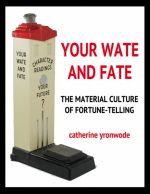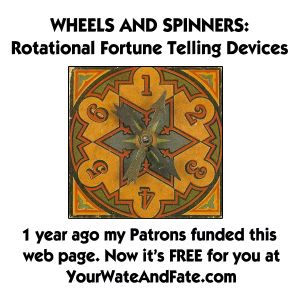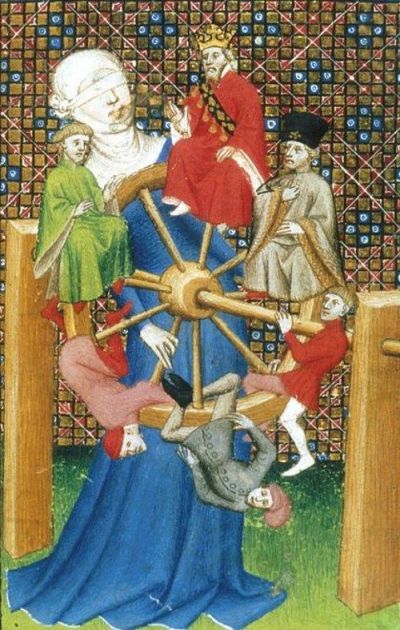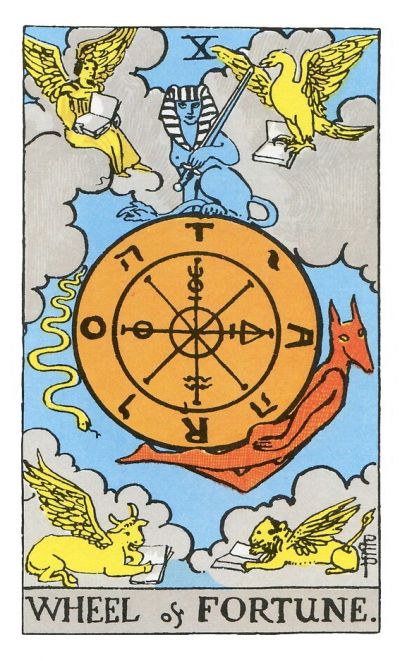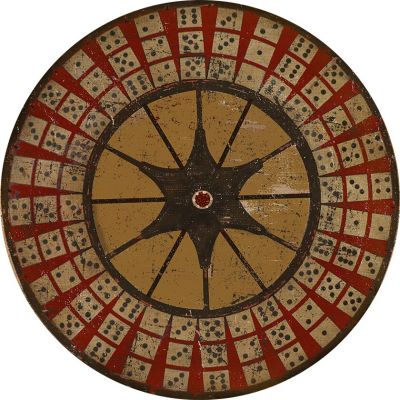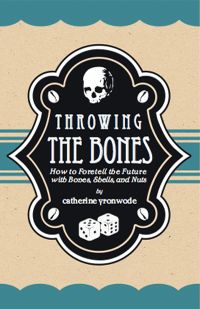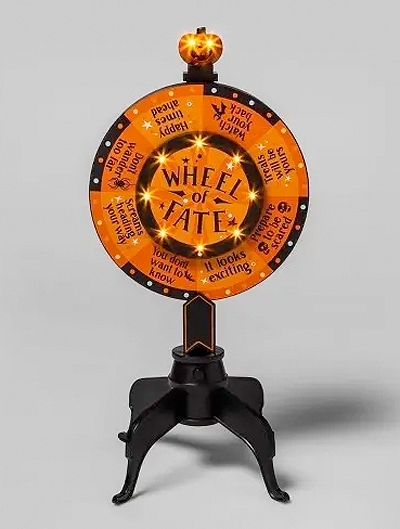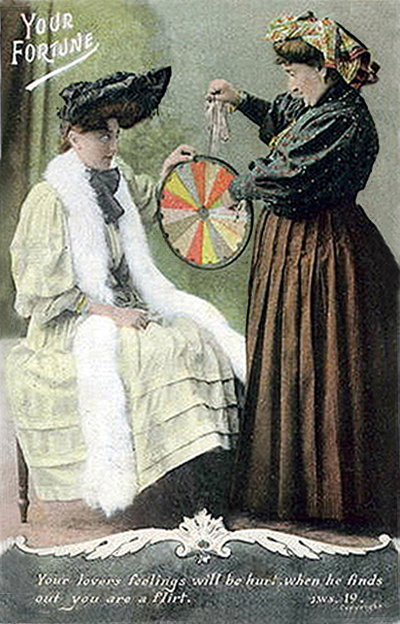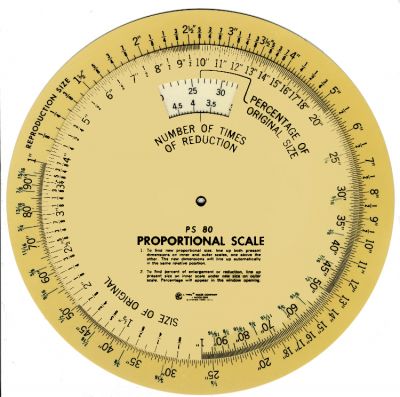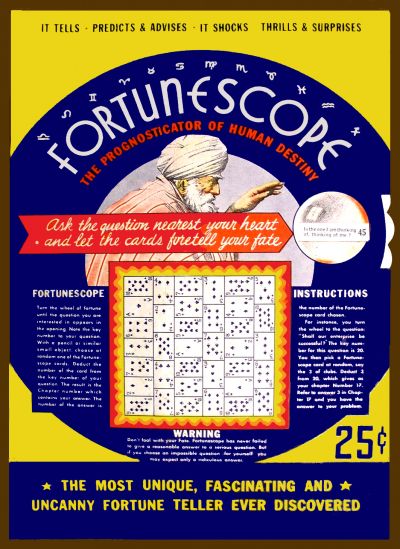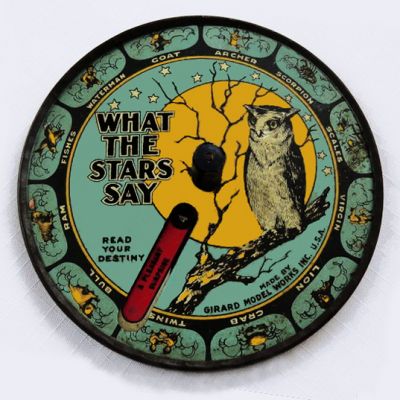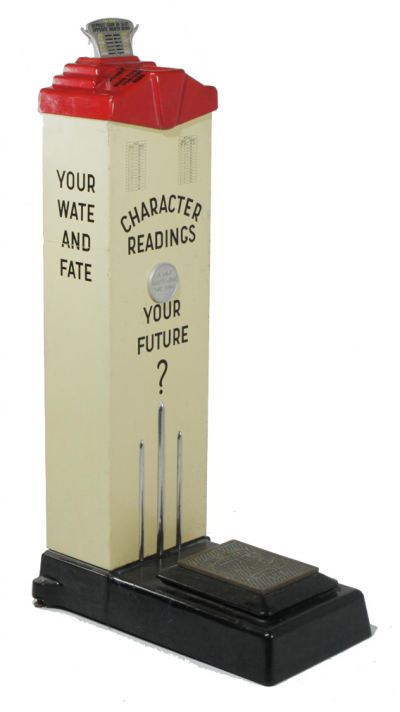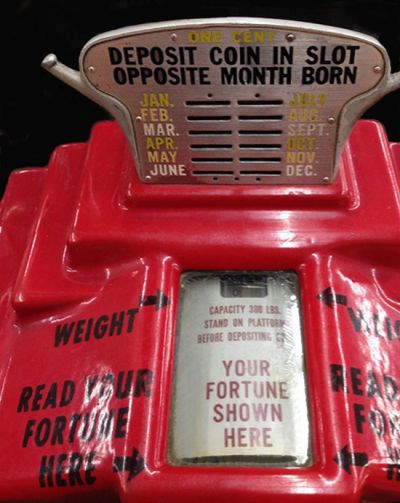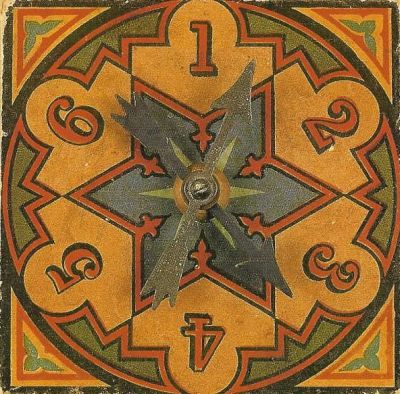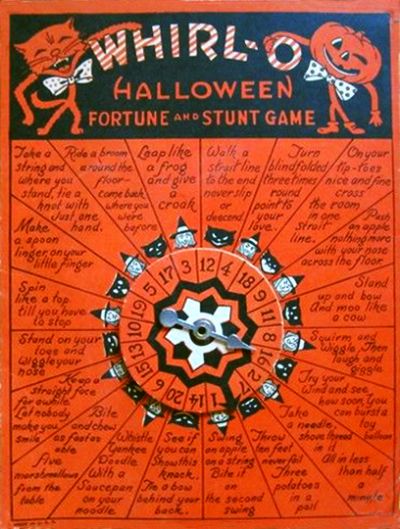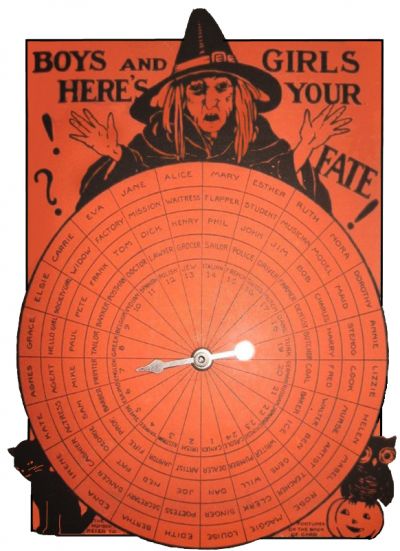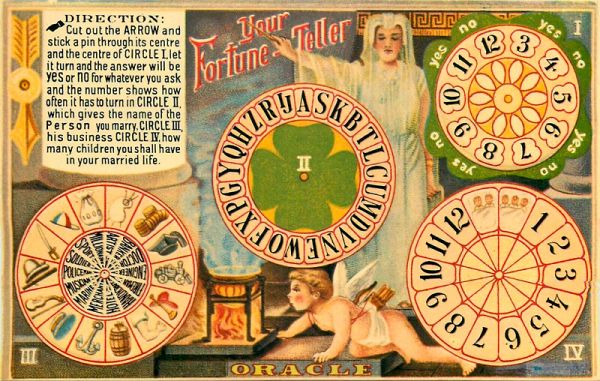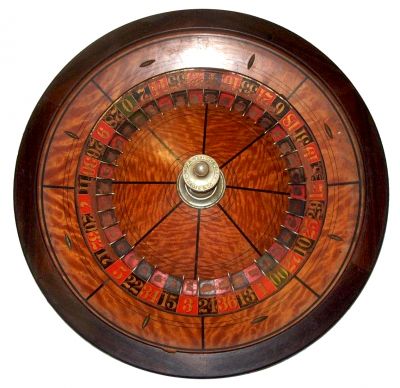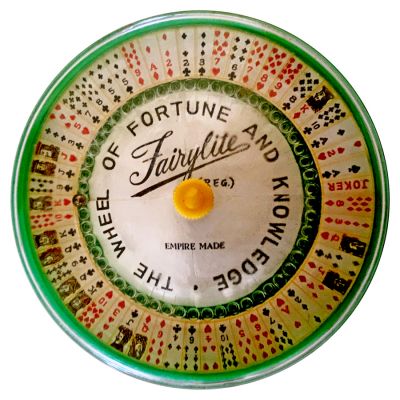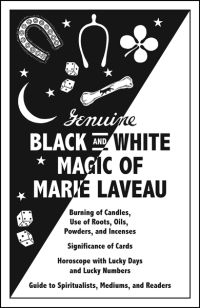Category:Wheels and Spinners: Difference between revisions
| Line 229: | Line 229: | ||
== See Also == | == See Also == | ||
* [[:Category:Divination Methods| | * [[:Category:Divination Methods|Divination Methods]] | ||
''Thanks to nagasiva yronwode, my own King of Hearts, for helping with image acquisition and clean-up for this page.'' | ''Thanks to nagasiva yronwode, my own King of Hearts, for helping with image acquisition and clean-up for this page.'' | ||
Revision as of 05:15, 31 December 2023
My Patreon supporters paid for this page and had access to it one full year before the public did.
- Patreon Release Date: January 28th, 2021
- Public Release Date: January 28th, 2022.
Please tell your friends that they can subscribe to my Patreon stream for $2.00 per week:
Patrons: To discuss this and other Patreon pages with me, join my private Patreon Forum:
Support Your Wate and Fate
All of the material you have access to here -- the instructive booklets, the nostalgic postcards, the boldly graphic ephemera, and all of the historical information researched and shared from the mind of the woman who is making it all happen -- can easily fit into one 8 x 10 foot room in an old Victorian farmhouse, but you would never see it without the investment of the time it takes to produce such a site and the caloric input such a site requires in the form of food for the writer, graphic designer, and database manager, as well as the US currency needed to pay for the computers, software applications, scanners, electricity, and internet connectivity that bring it out of that little room and into the world.
So, as you can see, this site is the darling of many, and it is growing at a rapid rate ... but although it is "free," there also is a cost. The financial support of my Patreon subscribers -- my Patrons -- underwrites this cost.
Whence Come These Wheels of Fate and Fortune?
Wheels and spinners are fortune telling devices that employ the principle of sortilege or random generation of answers by the use of a wheel on which selected fortunes, character readings, or answers to questions appear. There are several types of mechanisms, which are herewith taxonomized.
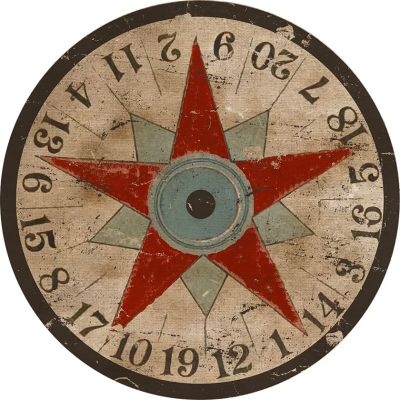
The link between mundane wheels of transport and spiritual wheels of prophecy go back to early history. In ancient times the Hebrew visionary Ezekiel, held captive in Babylon, saw God approaching in a fiery battle chariot drawn by four living creatures, each with four wings and four faces (a man, a lion, an ox, and an eagle). Beside each creature was a "wheel within a wheel," having "tall and awesome" rims covered with eyes, and God appointed Ezekiel to be a prophet and a "watchman" in Israel. (Ezekiel 1:20-21). The vision of Ezekiel formed the basis for one of the most famed of 19th century Black spirituals, "Ezekiel Saw the Wheel," thus cementing the symbolism of divine machinery and majesty with the mundane wheels of mechanical industry.
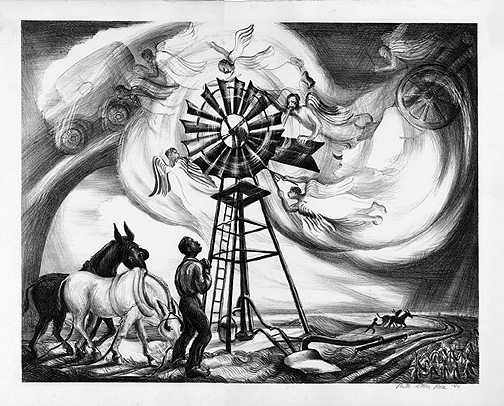
Divination wheels are often called Wheels or Fortune or Wheels of Fate. The conception of a blindfolded Lady Fortune spinning a wheel on which men rose and fell was proposed by the Roman philosopher Anicius Manlius Severinus Boëthius in "The Consolation of Philosophy," which he wrote in 524 while in prison awaiting execution. During the Medieval period and on into the 15th century, dozens of manuscript illustrations for this text showed Dame Fortune spinning her wheel of ascending and descending men.
The Wheel of Fortune was further popularized in Italy during the 15th century, when one of the tarot card trumps was titled "The Wheel of Fortune." Like the illustrations for "The Consolation of Philosophy," it also shows a wheel, but Lady Fortune is no longer its motive force. By the 19th century, when the idea of an "occult tarot" was brought into prominence by the artist Oswald Wirth, Egyptophilic animal-gods were set to spinning on the wheel, and the four "living creatures" of Ezekiel's Jewish vision were incarnated in the four corners of the card as the four Gospel writers of the Christian New Testament: Matthew the Man as Aquarius or Fixed Air, Mark the Lion as Leo or Fixed Fire, Luke the Bull as Taurus or Fixed Earth, and John the Eagle as Scorpio of Fixed Water. This is the form made famous as "The Wheel of Fortune" by Pamela Colman Smith, who illustrated the now classic Rider-Waite-Smith Tarot in 1909. What sets her design apart from earlier versions is that the central wheel bears many curious symbols, among them the letters R-O-T-A ("wheel" in Latin), which reverses to T-A-R-O-T (the self-referential deck of cards), or even T-O-R-A-[H], the first five books of the Bible. Alternating with these Latin letters are the Hebrew letters Yod-Heh-Vav-Heh, the Tertagrammaton or four-lettered name of God conventionally pronounced Yahweh or Jehovah. Within these is a smaller wheel on which are the four alchemical elements, represented as the glyphs for Mercury (Air and the suit of Swords), Sulphur (Fire and the suit of Wands), Water (Water and the suit of Cups), and Salt (Earth and the suit of Pentacles).
Mechanically speaking, like the mundane battle chariot wheels which became the all-seeing eyed wheels of God's firmament in the vision of Ezekiel, spiritual divination wheels generally have analogues in the mundane world, from which they derive their method of operation. Because the two are so throughly linked, the descriptions of divining wheels are accompanied by introductions of the mechanical wheels on which they were based. Such wheels are generally thought to operate by the production of synchronistic or meaningfully random messages, but while some divination wheels generate fortunes that are truly random, not all examples of each type are as random as they first appear, for some wheels are made with, or can be outfitted with, secret ways to manipulate the results. However, since their manner of operation is seen in the open, the seeker or querent who employs divination wheels may assume that they all produce random outcomes by sortilege, whether or not they actually do.
Spinning Wheel with a Fixed Pointer
The spinning wheel, often called a Wheel of Fortune, is the typical carnival or county fair wheel used for gambling or for the selection of prizes. If outfitted with pegs and a clacker, it will draw a crowd who hear the sound from a distance and come to watch it spin. God approaches Ezekiel as the divine warrior, riding in his battle chariot. The chariot is drawn by four living creatures, each having four faces (those of a man, a lion, an ox, and an eagle) and four wings. Beside each "living creature" is a "wheel within a wheel", with "tall and awesome" rims full of eyes all around. God appoints Ezekiel as a prophet and as a "watchman" in Israel Its greatest advantage is that it may be made very large in size and suitable for public display. Its only drawback is that it must be installed or used in a plumb, upright position. Larger wheels may supply up to 48 or 50 numbers or fortunes; smaller wheels may have 16 to 24.
Spinning Wheel with a Fixed Pointer for Gaming
The postcard below depicts a gaming wheel with 48 sectors. The wooden pegs around the outer rim slap a leather clacker as they rotate, drawing attention to the wheel. The text on the back of the postcard reads, "The slowly revolving 'Wheel of Fortune' with sparkling mirrors and brightly colored sections, is one of the attractions in most Western gaming houses. Usually placed just inside the main entrance, the wheel, with its glittering display of color and scintillating light, will cause the sidewalk stroller to pause, and give the attendant opportunity to invite him to 'Try your Luck - Play a dollar and win ten.'"
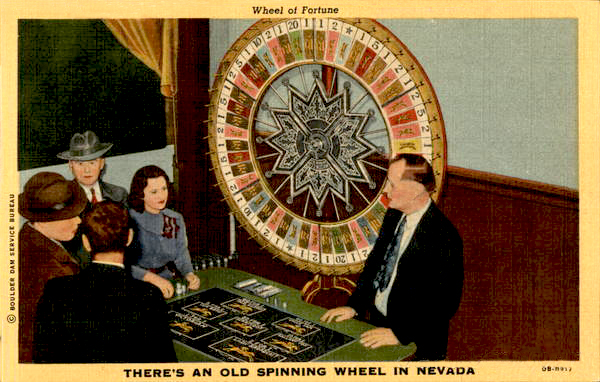
Similar wheels were used in the African-American community from the late 19th century until well into the mid 20th century to determine the winners in the illegal lottery known as Policy. Policy wheels of the era had colourful and evocative names such as The Greyhound, The Interstate, and the Red Devil. Because wheels can be fixed or gaffed to only return pre-selected numbers, they fell out of favour for use in Policy and by the 1940s most Policy outfits used another method to select winning numbers, often paying out money to those who guessed the final three digits found in daily newspaper reports of the activities of the New York Stock Exchange, the Federal Reserve, or the Chicago Board of Trade.
Spinning Wheel with a Fixed Pointer for Divination
Although spinning wheels of fortune are best known as gaming wheels, the same principle of operation is used for large fortune-telling and character-reading wheels. Here we have a modern replica of a very old British divination wheel, minus its pegs and clacker. It was crafted as a piece of wall art in the 2020s from a museum-piece original that once was used in a carnival or at a seaside boardwalk.
The above wheel has 15 possible outcomes, which are duplicated to make a show of having 30 outcomes. At first glance it looks like a gaming wheel designed to simulate dice play; however, it is actually a wheel that replicates the common British form of fortune telling that employs three dice cast at one time, which results in 15 possible outcomes, numbered from 3 to 18. The operator of the wheel would have the predictive fortune outcomes memorized and could call them aloud, and would also hand the seeker a printed slip that accorded with that particular dice casting, to take home as a memento of the divination. The traditional 15 British dice fortunes can be found in my book "Throwing the Bones."
$12.00
BOO-DIV-BONE
In addition to the gaming and carnival associations that attach to divinatory spinners, there is a culturally traditional linkage of such devices to the holiday of Halloween, especially as it is observed in the United States. This will be evident as we continue onward with our overview of divination by spinning. Halloween motifs can be found in the simple mechanical spinners of the early 20th century, and have continued to be popular well into the era of 21st century electronic spinners.
The electronic animated Halloween Wheel of Fate by Hyde and Eek Boutique for Target stores was first introduced in 2017. It is made to stand on a table-top and is operated by batteries. Pressing a button causes the wheel to spin and lights to flash while carnival music plays and the sound of the clacker is heard. The wheel slows to a stop and the lights shift to the pointer and to a figure at the top, whose eyes flash. A man's voice then reads the fortune in an comedically ominous manner, sometimes with cackling laughter, and the carnival music comes to an close. New designs have appeared yearly, but all utilize the same mechanism. Early models had a skull at the top and only delivered four fortunes, all of which were bizarre or threatening. The 2020 model shown here has a friendly jack-o-lantern at the top and delivers eight messages of varied import, from pleasant to mildly spooky.
Suspended Wheel with a Fixed Pointer for Divination
Smaller wheels of fortune, such as the one shown below, were used by strolling fortune tellers at carnivals and street fairs. This Victorian example is taken from a set of of British photographic postcards published around 1910 by Joseph Welsh and Sons. It is from s series of fortune teller cards titled "Your Fortune," all of which bear the publisher's initials "JWS" on the front, followed by a number. The company's early coloured cards were produced in Belgium and in Germany, utilizing a "Trichromatic" process that resulted in a limited pallet of pastel tones.
This wheel has 16 fortunes. Although it appears at first glance to be hung from a silk ribbon, a closer look reveals that it is affixed to a rod or stick, which is partially concealed by a flowing silk handkerchief. Thus its action is the same as the stationary wheels shown above, and it is simply oriented 180 degrees upside-down.
Spinning Wheel with a Fixed Show Window
A spinning wheel, or a series of concentric wheels, with a fixed show-window has long proved to be a convenient way to display the products of mathematical calculations. Such spinners may be made of printed chipboard or a flexible and durable plastic.
Spinning Wheel with a Fixed Show Window for Calculation
Without a doubt the most beloved calculation wheel with a fixed show window is the PS 80 Proportional Scale made by the C-Thru Ruler Company. Even in the 21st century, when electronic calculators may have been expected to replace it, the Proportional Scale is faster to use when one is "trying" a size reduction for a print project, because the calculations are made by slowly spinning the concentric wheels until the delimited result is reached rather than by the tedious process of calculating and recalculating.
The above model, the PS 80, is an 8 inch wheel. Smaller models, like the PS 69 and the PS 79 are also useful, but the true professional graphic designer can be known by the PS 80 in his or her drawer. There are online versions of the Proportional Wheel, but if one is dealing with print, one is already not keeping one's eyes on a screen, and so one opens the drawer, and there it is, just as useful and efficient as it was 50 years ago. The author still has, and uses, a 1972 era C-Thru PS 80, and the wheels are still manufactured to the present day. If the question is, "What percentage reduction must i make to fit this X-sized artwork into an Z-sized space?," the wheel will tell you, and likewise, if the question is, "If this artwork is X inches wide and Y inches tall, and i reduce it to Z inches wide, how tall will it be?," there is your trusty C-Thru PS 80, with the right answer for you.
Spinning Wheel with a Fixed Show Window for Divination
This spinning wheel with a fixed show window is often made of inexpensive chipboard, and has quite a history as a popular form for an oraculum that delivers answers to questions rather than character readings or fortunes. It is typically larger than a spinner with a pointer on the surface, but if packed in a flat, stiff mailer, it can be sent to a recipient through the postal system. If made of chipboard, its only drawback is that like other chipboard items it is fragile.
The Fortunescope, first published in 1935 by S. S. Bloom, has been reprinted and sold to the public as recently as the early 2000s. It measures about 8 inches wide by 11 1/2 inches tall. It is made of heavy index stock paper with a scalloped chipboard wheel inside. The show-window does not hold the answer, rather, you turn the scalloped wheel to the desired question so that the turbaned swami gazes upon it as appears in the crystal ball shaped show window. In this case, the question selected was, "Is the one I am thinking of, thinking of me?" Next to the question in the show window is a "key number," in this case 45. Having selected your question, the Fortunescope reveals itself to be an oraculum rather than a spinner, for you are to use a pin or a pencil to randomly select one of the 36 playing cards below the swami and note its number. That number is subtracted from your key number. The resulting number will take you to the chapter of answers, printed on the back. For instance, in the case shown here if you selected the 10 of clubs, you would go to chapter 35 (that being your key number, 45, minus 10) and then you would read line number 10, the number of your card, as the answer. There are hundreds of possible answers.
What the Stars Say is made of tin litho, much like a top or noise-maker, with a central wooden spinner and an interior heavy chipboard disk on which numbers and answers are shown. What appears in the window at this time is the numeral 4 and the words, "A pleasant surprise." Unfortunately the instructions do not accompany this item, so its method of use can only be guessed at. The questions were probably coded to the numbers, as with a printed oraculum book, but its levels of operation seem simpler than the Fortunescope. Although the name of this spinner implies a link to astrology, and all the signs of the zodiac are shown around the rim, it is unclear if its numerical oraculum system related to the zodiac or if the signs were simply used for decoration.
Spinning Band with a Fixed Show Window
An interesting way to deliver fortunes and character readings is via a spinning band with a fixed show window. The band is driven around a framework that holds it under tension, so instead of reading the face of a disk, the seeker or querent reads the selected portion of the printed band, on which the fortunes, character readings, or answers to questions are imprinted. One way to envision this is to think of an automobile tire on a wheel. Reading a wheel spinner is like reading messages that have been printed on the hubcap, while reading a band spinner is like reading messages that have been printed on the tire tread. This web site was named after a spinning band fortune telling machine, the American Scale Manufacturing Company's penny scale, popularly known as Your Wate and Fate.
The most common application of the band method of sortilege is found in penny scales in which a blind or shield covers the band until a coin is dropped in. The coin-drop sets the band in motion, and also opens the blind. After a random spin or drive, the band settles to a stop, revealing the seeker's weight and one message, at top-center of the band. Depending on how the text on the band is set up, the revealed message is either the seeker's fortune or the answer to a question.
Not all penny scales of the 19th and 20th centuries told fortunes, and of those that did, not all worked on the spinning band principle. However spinning bands proved to be very popular with scale venue proprietors because they are durable and almost fool-proof in operation. Their only drawback is that the number of fortunes or answers to questions that can be fitted onto a band is limited. This problem was solved by the operators changing out their bands at regular intervals, thus avoiding declining interest due to repetition if a client pays to be weighed and receive a fortune on a regular basis.
Spinning Pointer with a Fixed Wheel
The spinning pointer fixed at the center of a wheel is frequently made of inexpensive chipboard, for game play or for divination. Its greatest advantage is that it may be quite small and thus packed in a game-box or sent through the mails. Its only drawback is that it is fragile and if it is bent or the brad that holds the pointer in place becomes worn through hard use, it will no longer work.
Spinning Pointer with a Fixed Wheel for Gaming
The spinning pointer finds its greatest use in game play, for instance by enumerating the number of spaces to be moved on a board, the order in which turns are to be taken, or a "stunt" that each participant must perform in front of the other players. Such spinners rarely have more than 6 or 12 sectors, and may have fewer.
The inclusion of one spinner in a game set is quite common; the above wheel is unusual in that there are two individual spinners mounted on its single shaft. The provenance of this 19th century game spinner is unknown, but such spinners have regularly been part of home board games, especially those that pack into a box and include a fold-out board and small playing pieces or markers. This spinner offers sectors from one through six, perhaps for two players.
Not all spinner games involve betting, competition, or victory conditions of any kind. The Beistle Whirl-O Halloween Fortune and Stunt Party Game of the 1920s, shown above, is simply a way to get juvenile party-goers involved in silly activities as they follow directions to "Spin like a top till you have to stop" or "Stand up and bow and moo like a cow."
Spinning Pointer with a Fixed Wheel for Divination
Spinning pointers can easily be outfitted to produce character readings or fortunes. Those with 12, 16, or more sectors must either contain very short texts, or, as sometimes happens, they may be printed with a key on the front and full texts on the back of the chipboard
The Whitney Halloween Witch spinner of the 1920s is extremely rare and much-admired collectible. It's official title, Boys and Girls — Here's Your Fate!, is a little shocking to the parents of today, but it is a genuine article of sortilege and divination, albeit on a somewhat juvenile scale of expectations. The directions indicate that you are to spin the wheel once for every row on the wheel, a total of 6 times, each spin giving you a one-out-of-24 possible fortunes. Your first spin will produce a female name. The presumption of heteronormative naming and sexual preference is of its time, needless to say, so this female is your "best friend" if you are a girl and your "sweetheart" if you are a boy. Your second spin is read in the second row and discloses your female friend's occupation, a varied lot including musician, factory worker, cashier, missionary, agent, student, and widow. The third spin supplies the name of your male friend, a "sweetheart" if you are a girl, your "best friend" if you are a boy. The fourth spin reveals your male fiend's occupation, with choices such as doctor, lawyer, ice man, farmer, writer, and grocer. The fifth spin reveals your sweetheart's nationality, and includes, among others, Greek, Swede, Dane, Spanish, Indian, and Jew. The sixth and final spin results in a number, and these are keyed to 24 fortunes on the back of the wheel. Our photo shows a number 7, which is, "Your dearest wish is about to be granted, but not as you expected." A warning accompanies these fortunes: "It is bad luck to try this more than one time in 24 hours."
Your Fortune Teller Oracle is the name of a novelty postcard first published around 1910. As the instructions explain, the recipient is to cut out the arrow and fix it to spin freely on a pin, which may be driven though each of four wheels. Wheel #I indicates the answer to yes and no questions and also may be used to give you a number indicating the number of times you are to spin the pointer on wheel #II before landing on the letter of the alphabet that gives you the first or last initial of the name of the man you are to marry. wheel #III is for determining the profession of your future husband and gives the outcome both in terms of words and with an image symbolic of his occupation. Wheel #IV determines the number of children you will have in your married life, and allows you from one to twelve, with special sectors for twins and triplets. Obviously this is a rare vintage postcard, as most copies would have been cut up for use. Luckily it was reprinted twice, once by Pleiades Press of Seattle, Washington (printed in the USA), and once by the Merrimack Publishing Corporation of New York City (printed in Hong Kong), so copies are not difficult to locate.
Roulette Spinner with a Center-Piece and Pockets
The roulette wheel is the most complex form of spinner, because it supplies spin and counter-spin at the same time. It makes an attractive rattling noise while in operation that tends to draw onlookers, although they must stand around it and slightly above it to view the action, thus limiting its audience size. Once released, the ball races around the top area of the device in one direction, held up by centrifugal force, while the wheel spins in the opposite direction. As the wheel slows, the ball falls down, perhaps bouncing off one of the diamond-shaped deflectors, or perhaps not, and finally settles into one of the pockets.
Roulette Spinner for Gaming
Generally used for numbers betting, the roulette spinner has given rise to its own gaming rules, which are complex and satisfying to players. Bets may be made not only on which pocket the ball will land in, but also in which sector of the wheel it will settle. Bets may be made on colours (red or black) or the oddness or evenness of the number into which the ball settles, and there are also "outside" bets made on combinations of numbers. The typical European single-zero roulette wheel has 37 numbered pockets (0, 1-36), which results in the house getting a 1/37, or 2.7 percent, edge when the ball falls into the non-paying 0 pocket. The typical American double-zero roulette wheel has 38 numbered pockets (0, 00, 1-36) , which results in the house getting a 1/19, or 5.26 percent, edge when the ball falls into the non-paying 0 or 00 pockets. The home-play no-zero roulette wheel has 36 numbered pockets (1-36) with no house edge because there are no non-paying numbers.
Playing roulette to win consistently is the goal of many people. To do so, they generally try to take advantage of innate manufacturing flaws or defects in a specific wheel arising through wear and tear. Their goal is to determine the wheel's bias for certain numbers, which, if they are lucky, may be reduced to about an eighth of the circle. Computer-assisted telemetry and mathematical algorithms materially assist the bettor who wants to conquer a given wheel by tracking its spin and compiling thousands of tries to see which numbers are favoured. Casinos push back against these techniques by replacing their wheels frequently and by banning the use of cell phones or computers near the machines.
Roulette Spinner for Divination
The roulette wheel's mechanism of operation can be employed to present character readings or fortunes if the pocket into which the ball settles bears an identifying number, domino, or playing card that can be interpreted according to the usual rules of numerology, domino reading, or cartomancy. Its only drawbacks are that it must be installed or used on a dead-level surface and that with increased size comes increased cost of manufacture.
The Fairylite Wheel of Fortune and Knowledge is a miniature roulette wheel contained within a 4 inch diameter bright green plastic case. It stands one inch tall to the top of its clear plastic cover, with a yellow turret or spinner extending ¼ inch above that. It is outfitted with 53 pockets (52 cards plus a Joker), each one bearing a hand-cut and glued miniature playing card, plus the number and suit of the card. The spinning action is loose and free, but a bit on the wobbly side, and the small metal ball makes a lovely rattle as it rolls down and finds a pocket. Acquired without a sheet of instructions, this 1950s era wheel is nevertheless practical, because the listed meanings of individual playing cards according to 19th and 20th century British and American fortune telling traditions are readily obtainable, for instance in the book "Genuine Black and White Magic of Marie Laveau."
$12.00
BOO-GRI-BAWM
The Fairylite brand name and logotype indicate that this roulette Wheel of Fortune and Knowledge was imported to England by the same company that imported the porcelain Fairylite Foreign Cup of Knowledge tea leaf reading set, which is on display at The Mystic Tea Room. The term "Empire Made" signifies that it was manufactured in a part of the British Empire outside the British Islands, probably Hong Kong.
See Also
Thanks to nagasiva yronwode, my own King of Hearts, for helping with image acquisition and clean-up for this page.
catherine yronwode
curator, historian, and docent
Your Wate and Fate
This category currently contains no pages or media.
